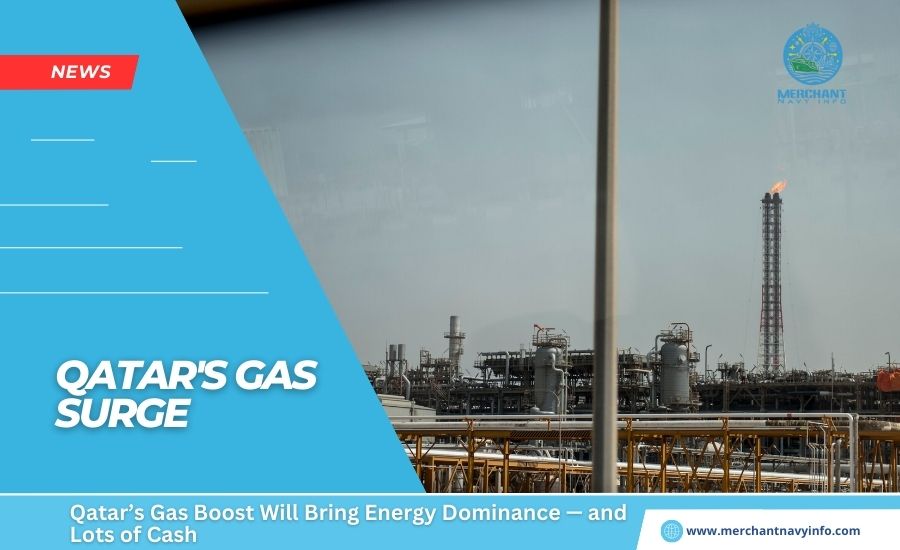
The small Gulf state plans to capture an even bigger share of the world’s natural gas trade. Thereby increasing annual sales by more than $30 billion with Qatar’s Gas. With two major expansion phases already underway and a major new expansion on the horizon. The small Gulf state of Qatar. Is on track to produce approximately 100% of its total liquefied natural gas supply by the end of the war. Preparing to manage a quarter. Ten years have passed, and with it, its share of world influence and wealth has grown.
Qatar’s Energy Minister Saad Al Kaabi last Sunday announced plans to increase production capacity by a further 13%. Adding to previously announced projects, increasing the country’s LNG production from the current 77 million tonnes per year. It was announced that the amount would be increased to 142 million tons by 2030. The state, which has fewer residents than Mississippi, will produce the equivalent of about 7.
Export Increase
Twenty-five million barrels of oil per day. Much of it is exported, essentially equaling oil shipments from Saudi Arabia, the region’s dominant energy powerhouse. And we couldn’t stop there. “We will continue to evaluate. If we can produce more, we will produce more,” Al Kaabi said at a press conference broadcasting the news. The only thing stopping Qatar from expanding further is that it will no longer see demand, he said. “We believe there is a huge market there.
Amr Diab/AFP Qatar has already achieved the highest per capita GDP by increasing her LNG exports. He is one of the richest countries, and this country will be even more profitable. Moody’s Investors Service estimates that hydrocarbons, including LNG, will account for about 44% of Qatar’s gross domestic product in 2022. If everything went online, the additional services would increase annual sales by about $31 billion. That’s according to Bloomberg calculations, based on recent long-term contract prices and assuming an oil price of about $80 per barrel. In an interview with Bloomberg News, Al Kaabi acknowledged that the new revenue would be in the tens of billions of dollars, although he did not give the exact amount.
The Expansion
So this expansion will help make one of the richest countries even richer. “Our country is a country that exports gas. I really don’t have any other income,” Al Kaabi said in an interview.Fifty years ago, Qatar was primarily thought of as a relative of the remaining Persian Gulf neighbors, Kuwait, Saudi Arabia, and the United Arab Emirates. Qatar’s North Field, part of the world’s largest gas reserves, was discovered in 1971, but producers at the time were more interested in exploring for oil. There was little development of gas fields until the country’s first LNG export facility was completed in 1996.
Now, Qatar’s larger-than-expected LNG plan will cement its place in the fastest-growing fossil fuel market for decades to come. Countries moving away from oil and coal but struggling to fully switch to renewables are seeking alternative energy sources, with Qatar’s long-term deal offering LNG supplies well beyond 2050. Supply will be secured. Some 20 countries, from India to Italy, have already signed long-term contracts to buy sea gas from state-run Qatar Energy, and more customers are likely to join.Stephen Wright, Associate Professor at Qatar’s Hamad Bin Khalifa University, said: “Qatar has a strategic long-term outlook to increase its market share and support the growth of global gas demand.” Stated. “As a state-owned energy company and the largest global player in the LNG sector, we can afford to make long-term calculations.”










